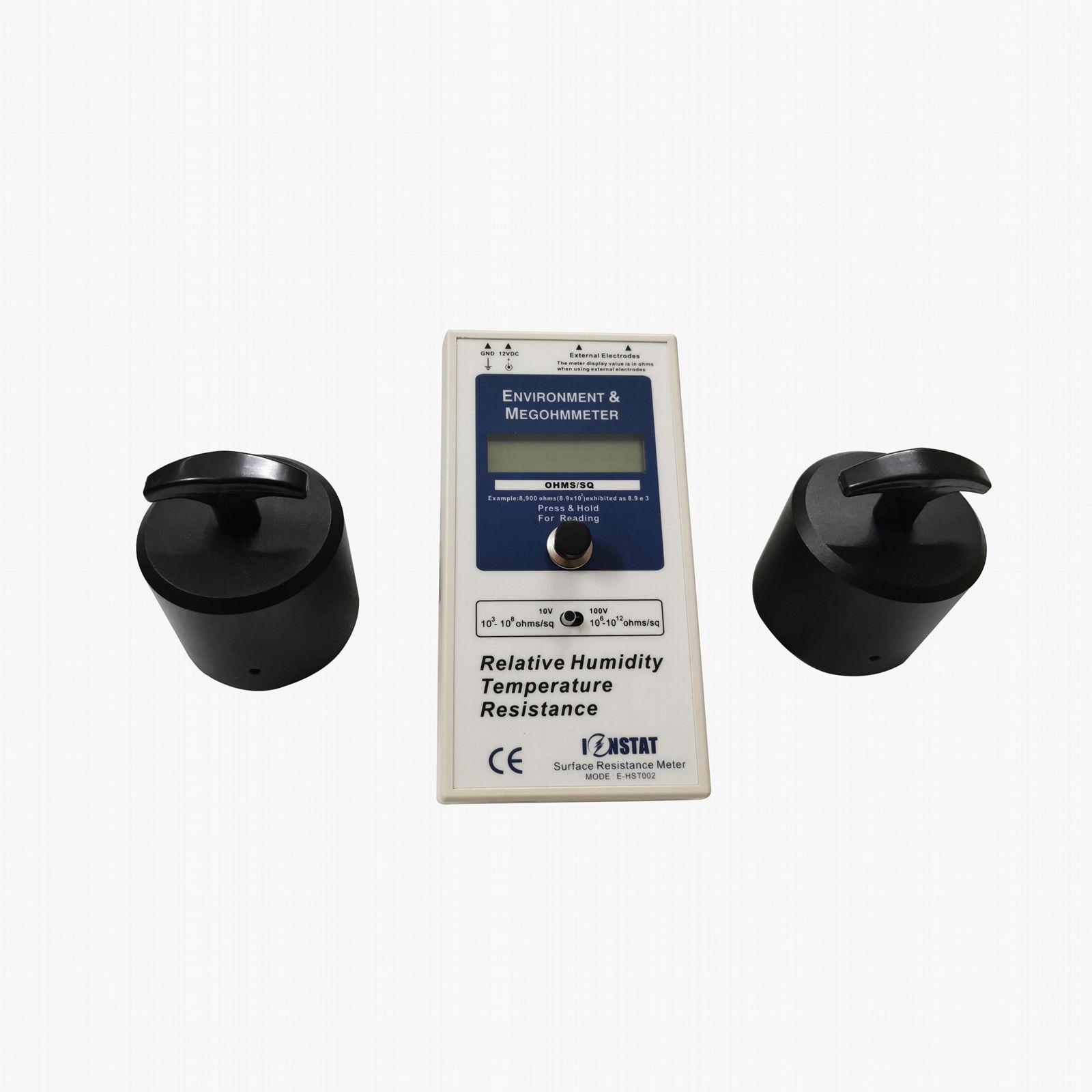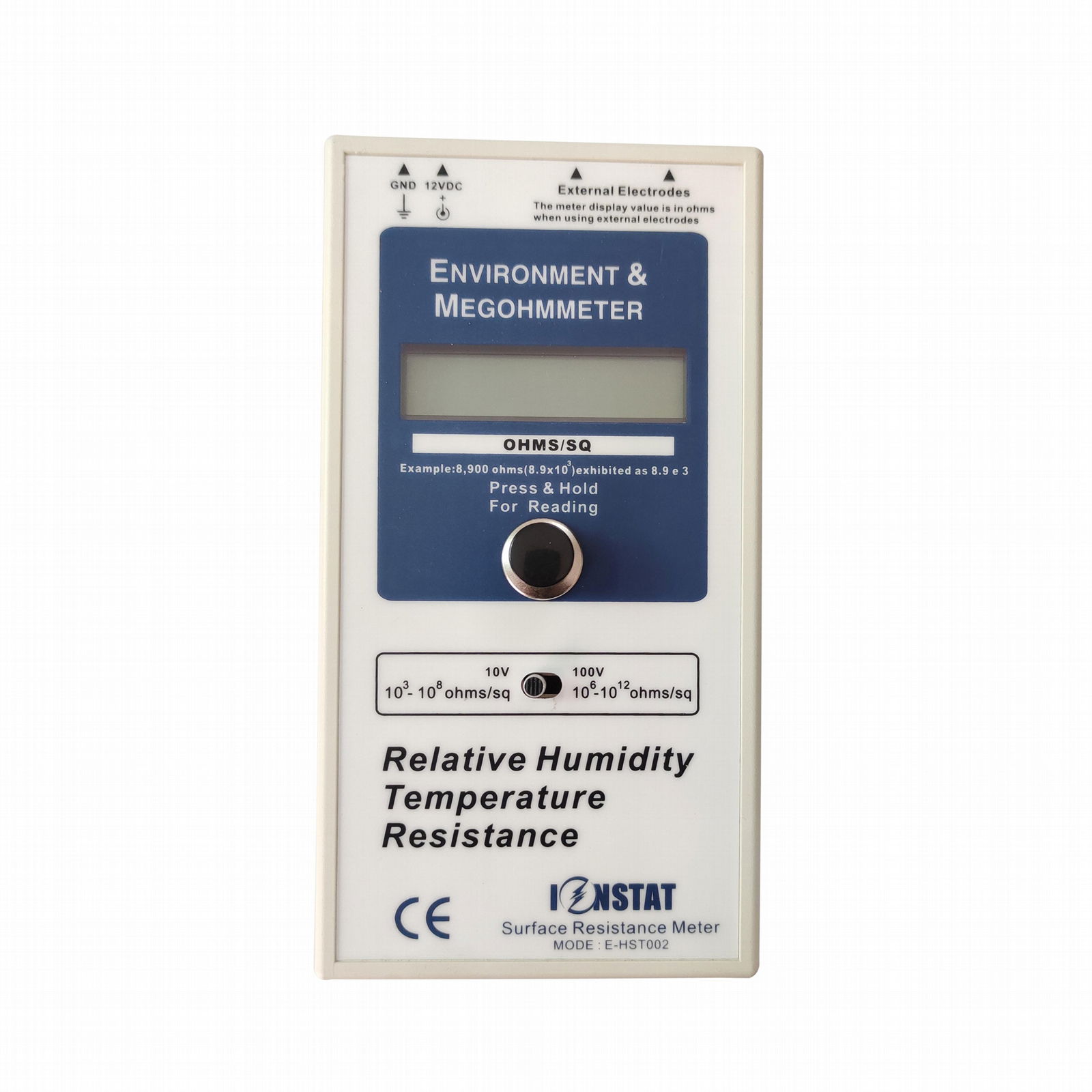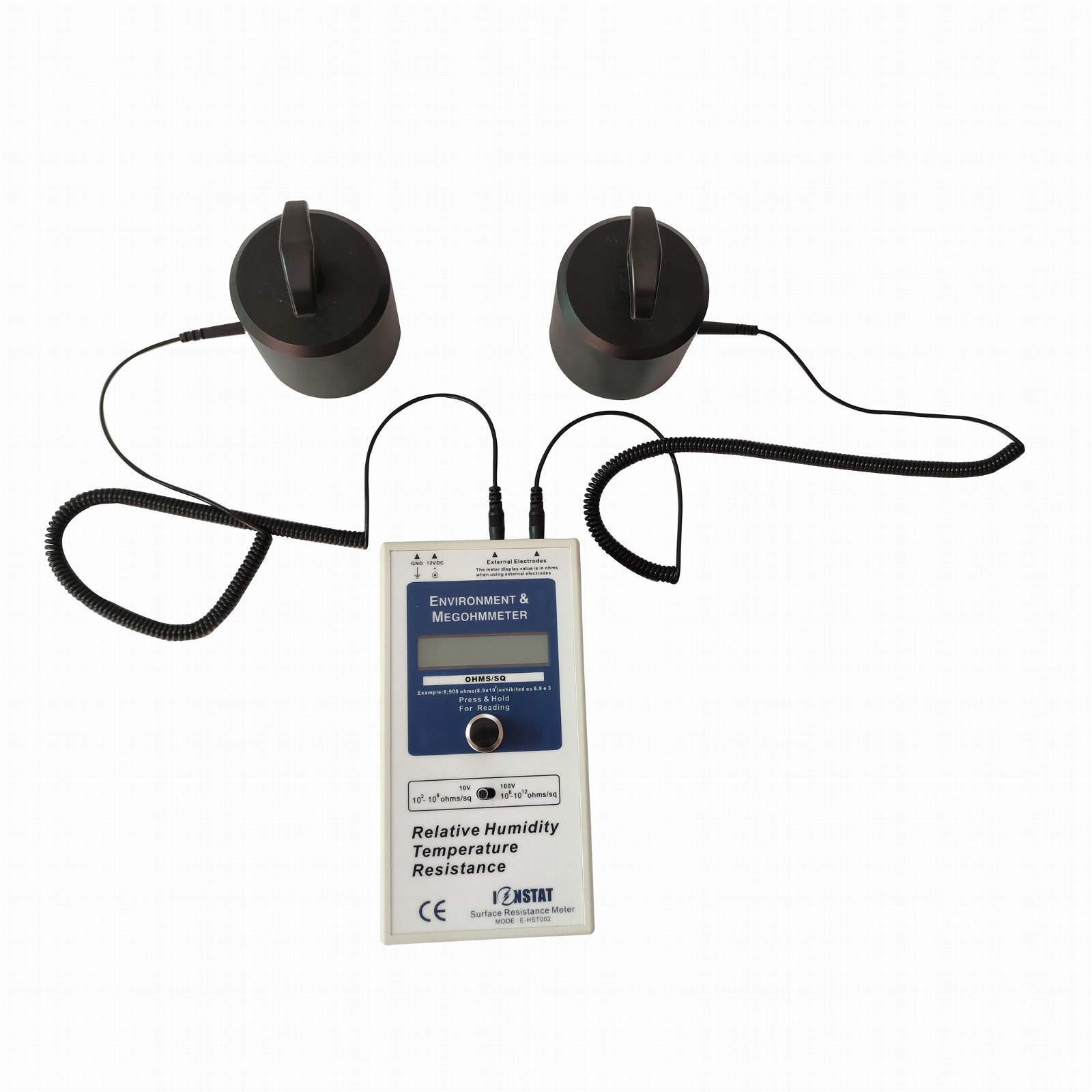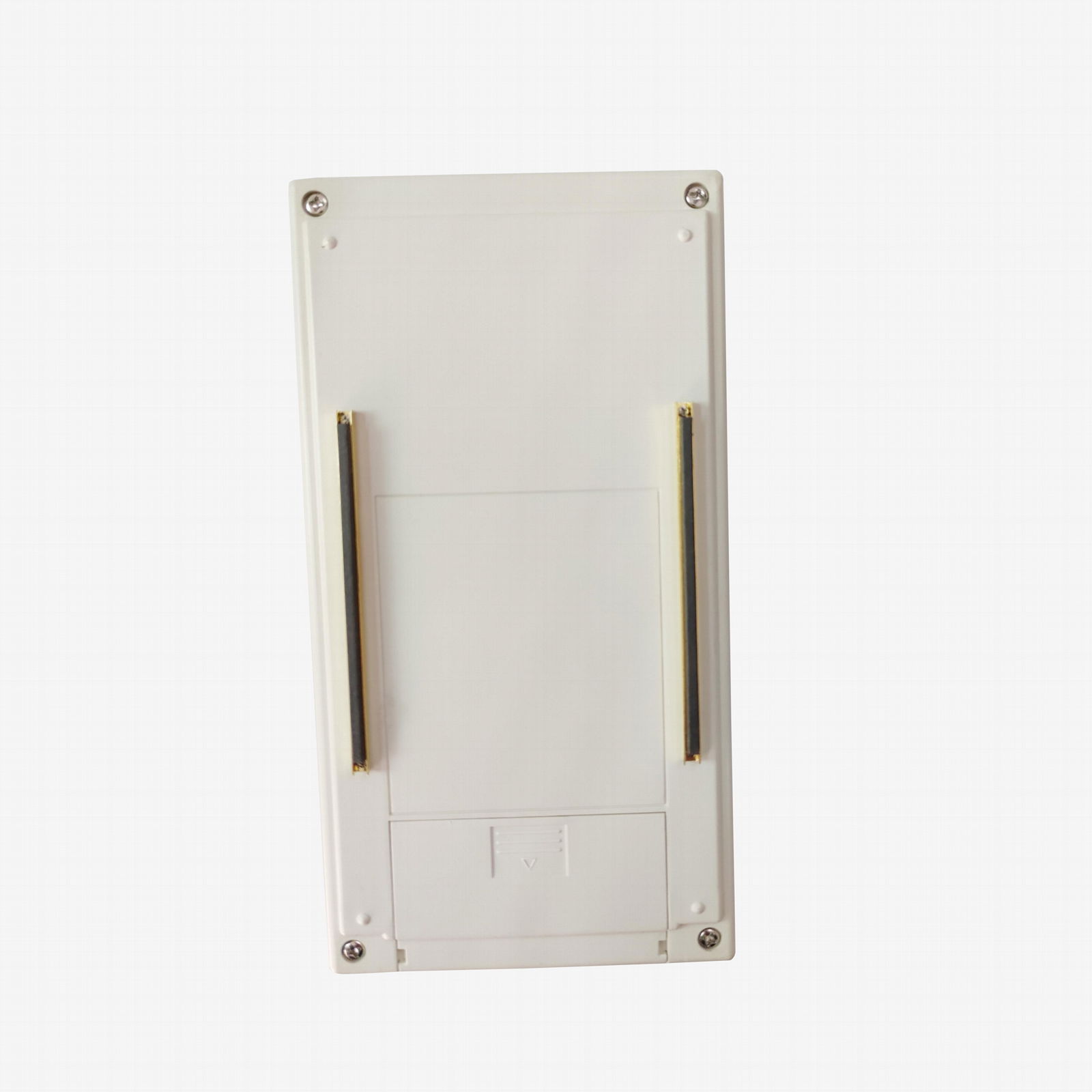ACL800 SJC030B Environment & Megohm Surface Resistance Meter
Product Description
The E-HST002 Megohmmeter kit measures surface resistivity, resistance, temperature and humidity. It is designed to test conductive, anti-static, and static dissipative surfaces for electrical resistivity/resistance according to EOS/ESD, CECC, ANSI, ASTM and UL test procedures.
The internal parallel electrodes comply with DIN EN 100 015/1 & ANSI/ESDA-S11.11. The five pound electrodes can be externally connected for tests according to IEC 61340-4-1, ANSI/ESDA S4.1 & ANSI/ESDA S7.1
Limits
Resistivity: 103-012 ohms/sq. Resistance: 103-1012 ohms Relative Humidity: 10% -90% RH Temperature: 32ºF; To 100ºF; Or 0ºC; - 37.7ºC; If Celsius model was purchased Measuring voltage: 10V and 100V
INTRODUCTION
The SJC-030B Megohmmeter is a dependable and easy to use audit kit for conductive and dissipative surfaces. This meter is designed to be used in all facets of material production including engineering, maintenance, quality control, incoming inspection, manufacturing, research, or sales departments for the testing of anti-static mats, floor finishes, paints, wrist straps, smocks, foot wear, bags and containers.
When using the built-in electrodes, the meter's test values for surface resistivity are in ohms per square. When using the external five pound electrodes, the meter's test values for resistance are in ohms (although they are displayed in ohms/sq. ).
DECADE SCALE
103 = 1 kilohm
104 = 10 kilohms
105 = 100 kilohms
106 = 1megohm
107 = 10 meg ohms
108 = 100 meg ohms
109 = 1000 meg ohms
1010 = 10, 000 meg ohms
1011 = 100, 000 meg ohms
1012 = 1, 000, 000 meg ohms
The test value is indicated on the LCD display. Unlike meters with LEDs that indicate only the decade the measured value falls within, the SL-030R will show the actual value.
27 ohms (2.7 x 107) is displayed as 2.7 e07 ohms/sq
TEST VOLTAGE
The test voltage ranges are 10V and 100V. According to ESDA standards S4.1, S7.1, and S11.11 one should choose 10V for conductive surfaces less than 106 and 100V for materials 106 or greater...If the meter cannot apply the correct voltage automatically, it will advise you to change to the proper setting manually. Use the switch in front of the meter to change voltage setting.
As defined by the ESD Association, values indicate the following:
Voltage Range Definition
10 volt <106 ohms per square Conductive
100 volt 106-1011 ohms per square Dissipative
100 volt 1012 > ohms per square Insulative
A NOTE ABOUT VOLTAGE
N previous years, people desiring to measure resistivity or resistance followed the ASTM D264, ASTM 991, NFPA 56A or NFPA 99 test standards. These procedures required people to test at either 500 or 1000 volts. This caused concern regarding safety to the person doing the tests. The ESDA standardized the test procedures so that lower volts could be used at specific ranges.
The SJC-030B meter uses a 9 volt battery. Some meters with 9 volts batteries do not give the accuracy that you need to perform the tests especially at values higher than 107. The SJB030 is built with a transformer that converts the 9 volt charge from the battery to 10 volts or 100 volts (whichever value is selected). The meter applies a constant charge over the complete voltage range. Accuracy is depends on applied voltage, temperature, and humidity.
Product Image

Img 1

Img 2

Img 3

Img 4

Img 5
Send Inquiry to this Member
Related Products of this Company
This member assumes full responsibility for the content of this listing. DIYTrade accepts no responsibility whatsoever in respect of such content.
To report fraudulent or illegal content, please
click here.
China Suppliers Quick Searching:
,